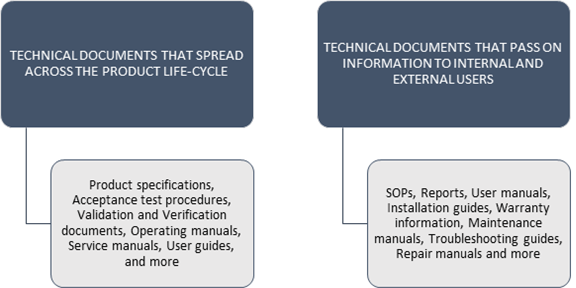Technical Documentation in Industrial Environment - Its Importance, Challenges, Writing process, Tools, and Technologies
Are you a technical professional in a highly specialized or regulated organization? At some time during your career, you must document your activities or deliver written technical presentations. Writing technical documents may even be a regular part of your job.

Understanding the importance of technical documentation, its challenges, writing process, tools, and technologies can be of great help especially if you find writing documents to be a challenge. This article provides valuable insights to address this challenge.
- Technical documents are an integral part of the introduction of a product or service to the market
- They can have a substantial impact on the financial success of a product or service
- They play an important role in the product life cycle during operation and maintenance
- They help in carrying out inspections, audits, and other regulatory requirements.
- Effective documentation can prevent incidents/accidents. Many big accidents have occurred due to inefficient documents
- Effective documentation helps in product verification and validation, testing and repairs.
- They minimize the risk so inherent in misinterpretation and/or error in oral communication.
- They help in complying with the documentation requirements of regulatory agencies.
- Making the documents easy to navigate, search, and reuse
- Presenting the content in simple, short and concise language
- The inability to reuse information
- Technical Writing in an Industrial Environment
- Technical Writing in the Pharmaceutical Industry
- Design History Files and Technical Files/Design Dossiers - Meeting U.S. FDA CGMPS and the EU's MDD Requirements
- Technical and Regulatory Writing for FDA Regulated Industries
- Effective Audit Report Writing
- SOP Writing, Training and Compliance in the Pharmaceutical Industry
- Creating Reader-Focused Technical Documents in FDA Regulated Industries
- Quality Writing for Technical Communicators
- The common technical dossier - guidance on writing the overviews and summaries
- Technical Writing for the Pharmaceutical, Medical Device and Biotech Industries
- Technical Writing for Medical Products: SOPs, Investigations and Change Records
- How to prepare a 510(k) Notification and a Technical File for the CE Mark
- Studying of input documents such as specifications, drawings etc.
- Analyzing the document requirement, target audience, the depth and complexity, the language level to be used for the specific user group
- Verification of the compiled information by domain experts if they are involved
- Clarifying of queries
- Good understanding of the product from the user point of view
- Listing of queries and issues while analyzing the product inputs
- Clarification with SMEs regarding the queries
- Designing of document templates
- Formatting requirements, font, presentation style, etc.
- Estimating the number of pages, number, and types of illustrations, etc.
- Writing content in harmony with the requirements
- Using graphical illustrations to convey the information more clearly to the reader
- Review of technical content for relevancy as per input
- Review technical content for accuracy and logical sequence
- Review of content for aesthetics and grammatical mistakes
- Verifying the presentation for information, formatting, and other aspects of the document
- Publish it in accordance with the requirement electronically or in print
- Distribute it as hard or soft copy as per the requirement as pdf, word files, online help or any format as called for
- Traditional publishing systems such as word and desktop publishing software
- Automated publication systems
- Tools for creating technical illustrations like CorelDraw Technical Suite etc.
Types of technical documents

The importance of technical documents
Technical documents must provide the most accurate information. Effective technical documentation delivers value not only to the technical writers, but also to their organization, and users.
The challenges in writing technical documents
Writing technical documents with the needed illustrations and appropriate content present many challenges. The technical specialist must have effective writing skills clubbed with product/domain knowledge, regulatory knowledge, skills to interpret SME drawings, visualization skills, and end-user point of view. Acquiring all these skills requires effective training. Other challenges include:
Technical writing courses
Training programs go a long way in helping develop effective technical writing skills. Some such programs are listed below:
Webinars
Seminars
Recorded CDS
Standard Resources
The process of writing technical documents
Generally, a six-step process is followed in writing technical documents. It includes the steps outlined in the following figure:

Analyzing the requirements:
This step comprises of
Designing comprises of:
Developing the content:
Conducting a technical review of the content:
Proofreading:
Publishing:






